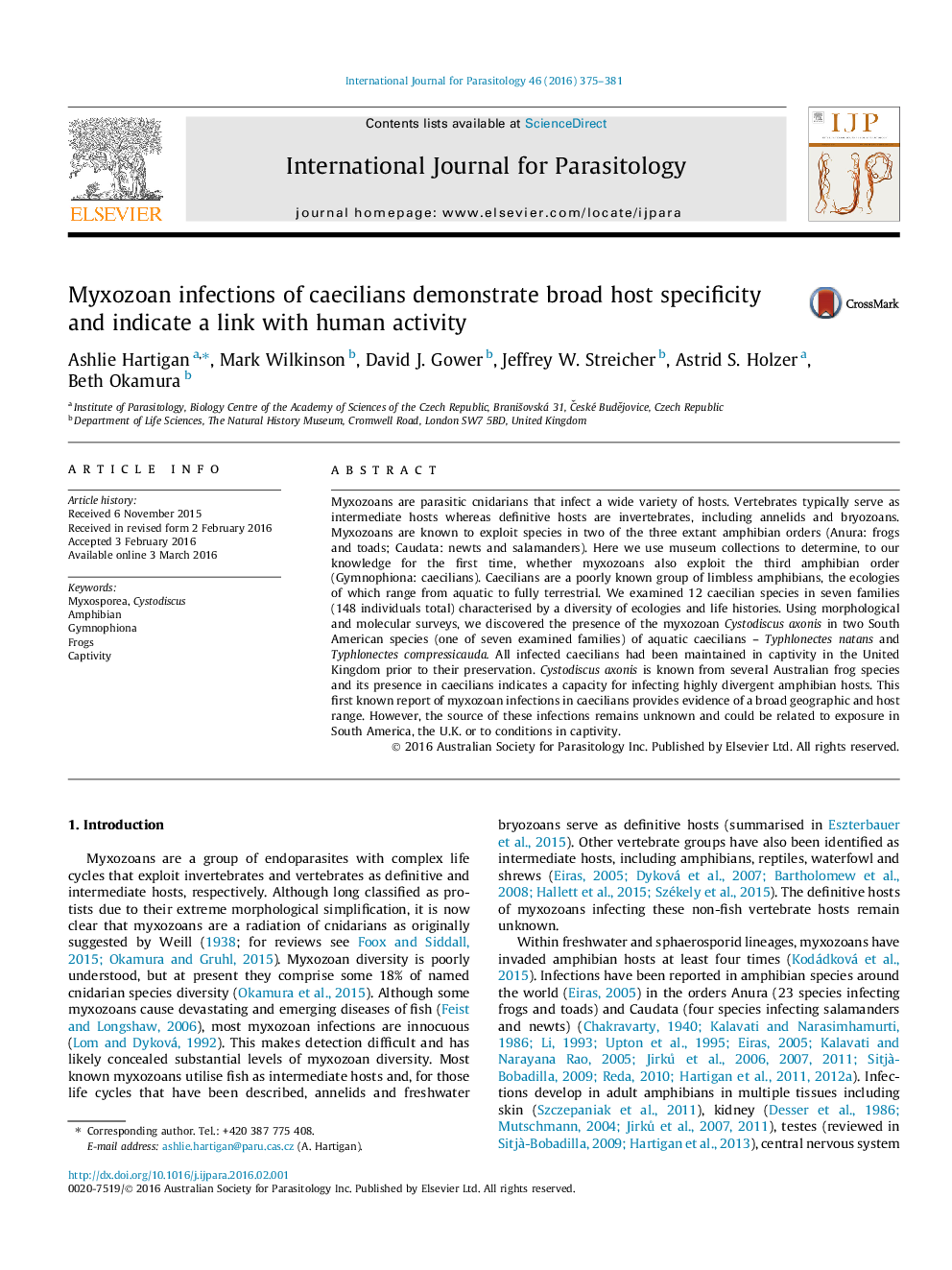| کد مقاله | کد نشریه | سال انتشار | مقاله انگلیسی | نسخه تمام متن |
|---|---|---|---|---|
| 2435977 | 1553724 | 2016 | 7 صفحه PDF | دانلود رایگان |

• We present the first known report of myxozoan infection in caecilians (Gymnophiona).
• Cystodiscus axonis exploits both caecilians and frogs.
• This is the broadest host range known for a myxozoan.
• Incidence in captive and pet trade caecilians implies association with human activity.
• Museum material provides insights on hosts and geographical range.
Myxozoans are parasitic cnidarians that infect a wide variety of hosts. Vertebrates typically serve as intermediate hosts whereas definitive hosts are invertebrates, including annelids and bryozoans. Myxozoans are known to exploit species in two of the three extant amphibian orders (Anura: frogs and toads; Caudata: newts and salamanders). Here we use museum collections to determine, to our knowledge for the first time, whether myxozoans also exploit the third amphibian order (Gymnophiona: caecilians). Caecilians are a poorly known group of limbless amphibians, the ecologies of which range from aquatic to fully terrestrial. We examined 12 caecilian species in seven families (148 individuals total) characterised by a diversity of ecologies and life histories. Using morphological and molecular surveys, we discovered the presence of the myxozoan Cystodiscus axonis in two South American species (one of seven examined families) of aquatic caecilians – Typhlonectes natans and Typhlonectes compressicauda. All infected caecilians had been maintained in captivity in the United Kingdom prior to their preservation. Cystodiscus axonis is known from several Australian frog species and its presence in caecilians indicates a capacity for infecting highly divergent amphibian hosts. This first known report of myxozoan infections in caecilians provides evidence of a broad geographic and host range. However, the source of these infections remains unknown and could be related to exposure in South America, the U.K. or to conditions in captivity.
Figure optionsDownload high-quality image (79 K)Download as PowerPoint slide
Journal: International Journal for Parasitology - Volume 46, Issues 5–6, May 2016, Pages 375–381